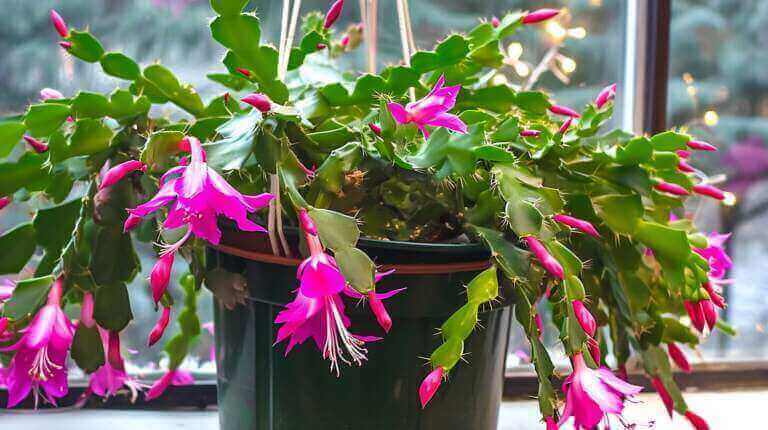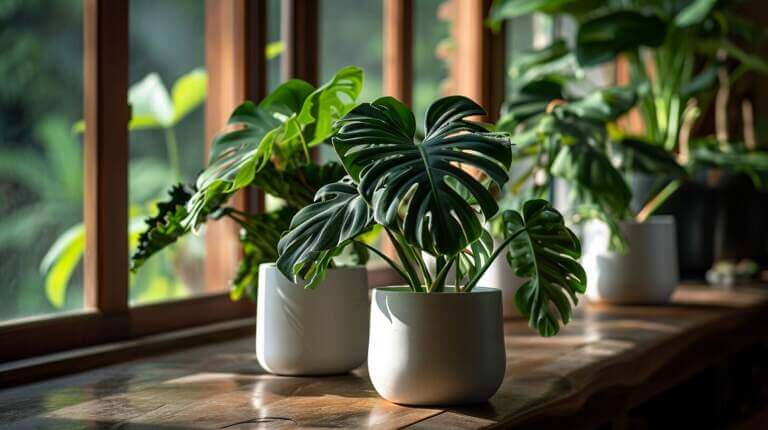How and When to Prune Philodendron Plant: Simple Steps by Step Philodendrons Trimming Guide
Are you a plant enthusiast looking to enhance the vibrant growth of your philodendron plant? Look no further! In this informative and detailed guide, we will unveil the secrets of pruning a philodendron plant, step-by-step.
By understanding the pruning needs, gathering the right tools, and timing the pruning correctly, you will learn how to maintain healthy growth and promote an aesthetically pleasing appearance for your beloved philodendron plant.
Get ready to unlock the secrets of successful philodendron pruning with these simple steps!
Key Takeaways
- Pruning is essential for maintaining the health and appearance of a Philodendron plant.
- Specific pruning techniques include removing dead or damaged leaves, promoting new growth, and shaping the plant.
- Prune the philodendron in early spring or late winter when the plant is dormant to minimize stress and hinder growth.
- Avoid over pruning and provide proper watering and light exposure for healthy growth after pruning.
Understanding the Pruning Needs of Your Philodendron Plant
When it comes to understanding the pruning needs of your Philodendron plant, there are a few key factors to consider. Pruning is an essential technique for maintaining the health and appearance of your Philodendron.
The first step in understanding pruning is to know the specific pruning techniques that are suitable for this plant. Philodendrons can be pruned to remove dead or damaged leaves, promote new growth, and shape the plant. It is important to use clean and sharp pruning tools to avoid damaging the plant.
One of the common mistakes people make is over-pruning, which can weaken the plant and hinder its growth. Another mistake is not pruning at all, which can lead to overcrowding and poor air circulation.
Gathering the Right Tools for Pruning
Properly equipping yourself with the necessary tools is an essential step in effectively pruning your Philodendron plant. By having the right tools on hand, you can ensure that the pruning process is efficient and safe. To help you get started, here is a table outlining the essential tools you will need for pruning your Philodendron:
| Tools | Purpose |
|---|---|
| Pruning shears | For cutting stems and branches |
| Sterilizing solution | To prevent the spread of diseases |
| Gloves | Protect hands from thorns or sap |
| Disinfectant wipes | Clean tools before and after use |
Choosing the right pruning technique is crucial to promote healthy growth and maintain the desired shape of your Philodendron. Some common mistakes to avoid in pruning include using dull or dirty tools, cutting too much or too little, and neglecting to sterilize your tools. By being mindful of these mistakes and using the right tools, you can ensure the success of your Philodendron pruning endeavor.
Step-By-Step Guide to Pruning Your Philodendron
To achieve optimal results, it is important to carefully follow a systematic and thorough approach when pruning your Philodendron plant. Here is a step-by-step guide to help you through the process:
- Assess the plant: Before you start pruning, take a close look at your Philodendron plant. Identify any dead or diseased leaves, branches, or stems that need to be removed.
- Choose the right tools: Use sharp and clean pruning shears or scissors to make precise cuts. This will minimize damage to the plant and reduce the risk of infection.
- Pruning techniques: When pruning, make cuts just above a leaf node or bud to promote new growth. Trim back to maintain its desired shape and size, and remove any overcrowded or crossing branches.
Timing Is Key: When to Prune Your Philodendron
Timing is crucial, as well as strategic planning, when determining the appropriate time to prune your plant. Pruning at the right time ensures the health and growth of your plant. Pruning is best done in the early spring or late winter when the plant is in its dormant phase. During this time, the plant’s growth slows down, making it easier to shape and maintain. Avoid pruning during the fall or winter when the plant is actively growing, as it can cause stress and hinder its development.
To ensure the best techniques for pruning your Philodendron, start by inspecting the plant for dead, damaged, or diseased leaves. Remove these first to prevent any potential spread of disease. Next, decide on the desired shape and size of your plant and prune accordingly. It’s important to use sharp, clean pruning shears to make clean cuts and minimize damage to the plant.
However, some common mistakes to avoid include over-pruning, which can stunt the growth of the plant, and pruning during the wrong time of year, which can cause stress and damage. By following these guidelines and using proper techniques, you can maintain a healthy and thriving Philodendron plant.
Tips for Maintaining Healthy Growth After Pruning
To ensure continued healthy growth after pruning, it is important to provide proper care and maintenance for your Philodendron plant. Here are some tips for maintaining healthy growth after pruning:
- Avoid over pruning: While pruning is necessary to promote growth and maintain the shape of your Philodendron plant, over pruning can be detrimental. It is important to only remove dead or damaged leaves and stems, and avoid excessive pruning that can weaken the plant.
- Provide proper watering: Philodendrons prefer slightly moist soil, so it is important to water them regularly but not excessively. Overwatering can lead to root rot and other issues, while underwatering can cause the plant to become dehydrated.
- Monitor light exposure: Philodendrons thrive in bright, indirect light. Keep them away from direct sunlight, as it can scorch the leaves. Place them near a window with filtered light or use curtains or blinds to diffuse the sunlight.
Frequently Asked Questions
Can Split Leaf Philodendron be Pruned Using the Same Method as Regular Philodendron?
Split leaf Philodendron can be pruned using the same method as regular Philodendron. However, when it comes to propagating the split leaf variety, a different approach is needed. To learn how to propagate split leaf philodendron, you must follow specific steps that ensure successful growth and development. Understand the unique requirements of this plant to ensure successful propagation.
Can I Prune My Philodendron Plant During the Winter Months?
Pruning frequency and techniques for philodendron plants are important considerations for maintaining their health and appearance.
When it comes to pruning during the winter months, it is generally not recommended as this is a period of dormancy for many plants, including philodendrons. Pruning during this time can disrupt the plant’s natural growth cycle and potentially weaken it.
It is best to wait until the spring or summer when the plant is actively growing to prune and shape your philodendron.
Is It Necessary to Sterilize Pruning Tools Before Using Them on My Philodendron?
Sterilizing pruning tools before using them on a philodendron plant is of utmost importance. This practice helps prevent the spread of diseases and pathogens that can harm the plant and hinder its growth. By ensuring that your pruning tools are properly sterilized, you minimize the risk of introducing any harmful agents to the plant’s delicate tissues.
Proper pruning tool care includes cleaning them with a disinfectant solution, such as rubbing alcohol or bleach, and regularly sharpening the blades for clean and precise cuts.
Can I Propagate the Cuttings From My Philodendron Plant After Pruning?
Propagating cuttings from a philodendron plant after pruning can be a beneficial practice. By taking cuttings from healthy stems and providing them with the right conditions, you can easily grow new philodendron plants. This allows you to expand your philodendron collection or share plants with friends and family.
Additionally, pruning your philodendron plant helps to promote growth, maintain its shape, and remove any dead or diseased parts, ensuring the overall health and aesthetics of the plant.
How Often Should I Prune a Philodendron Plant to Maintain Its Shape?
To maintain the shape of your philodendron plant, it is important to prune it regularly. Pruning not only helps to control the size and appearance of the plant, but also promotes healthier growth and prevents overcrowding.
The frequency of pruning will depend on the specific variety of philodendron and its growth rate. It is recommended to prune your philodendron plant once or twice a year, ensuring to use proper pruning techniques and avoiding common mistakes such as over-pruning or cutting too close to the main stem.
What Should I Do if I Accidentally Prune Too Much From My Philodendron?
If you accidentally prune too much from your philodendron plant, there are a few steps you can take to mitigate the damage.
Firstly, assess the extent of the pruning mistake and remove any dead or damaged parts.
Ensure that you provide proper care and maintenance, such as watering and fertilizing appropriately.
Additionally, avoid further pruning for a while to allow the plant to recover.
It is also advisable to consult a professional or a gardening expert for specific pruning tips for your philodendron plant.
How often should I prune Philodendrons?
It’s best to prune your Philodendrons in the spring or fall when the plant is in its active growth phase. However, you can give your Philodendron a light trim any time of the year if necessary.
How do I prune a leggy Philodendron?
To prune a leggy Philodendron, make your cut just above a leaf node on the stem. This will encourage new growth and help keep the plant compact.
How do I trim a Philodendron?
To trim your Philodendron, sterilize your pruning shears and cut the stem just above a leaf node. Be sure to remove yellowing leaves and trim any discolored leaves.
How do I cut back Philodendron?
To cut back a Philodendron, make sure your plant is healthy first. Then, using sterilized pruning shears, cut the stem just above a leaf node. This will encourage new growth.
What is the proper way to prune Philodendron plants?
Pruning Philodendron plants is beneficial for their health and appearance. Use sterilized pruning shears to cut the stem just above a leaf node. This will encourage new growth and help maintain the shape of the plant.
What should I do with the new growth after pruning?
After pruning, the new growth can be used to propagate new plants. Simply place the stem cuttings in water or soil and they will soon develop roots.
What should I do if my Philodendron has yellow leaves?
Yellow leaves can be a sign of overwatering or lack of nutrients. If you notice yellow leaves, adjust your watering schedule and consider applying a balanced fertilizer.
How does pruning affect the look of my Philodendron?
Pruning helps maintain the shape of your Philodendron and encourages bushier growth. It can also help prevent legginess and improve the overall health of your plant.
Can Pruning Help Improve the Health of My Philodendron Plant?
Pruning plays a vital role in enhancing the health of your philodendron plant. Trimming dead or damaged leaves helps promote new growth and prevent disease. However, it’s important to know when to repot philodendron as well. Repotting allows the plant to have sufficient space for root growth and access to fresh soil nutrients.
How do I care for my Philodendron after pruning?
After pruning, continue to provide your Philodendron with proper care including adequate light, water, and nutrients. Monitor its growth and prune as necessary to maintain its shape.
What should I do with the dead leaves on my Philodendron?
Dead leaves and stems should be removed from your Philodendron to keep it healthy. Make sure to cut off the dead leaves at their base using sterilized pruning shears.







